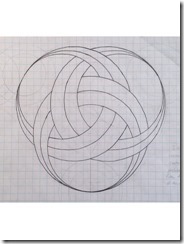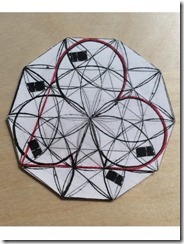I do not really understand Geometry myself but I sure like the way it looks. My older brother studied Architectural Drafting so this book, Geometric Design Reference for Aspiring Architects, Artists and Designers is right up his alley. I shall be notifying him of this awesome find.

“A few amazingly simple things they don't teach you in school! 86 illustrations intended to enhance your understanding of some of the building blocks of creative design.” ~ Mark Teegarden

Excerpt from the Description
I have a strange habit of needing to deconstruct designs in the same manner that one takes things apart to see how they work. It all started several years ago when I was introduced to the golden ratio during a college Math class.That led to a personal effort to find the secret behind the design of the violin. Later, I spent hundreds of hours trying to discover the keys to the style of art nouveau, classical ornament, and Leonardo da Vinci’s “Vitruvian Man”.
Illustrations from some of my de-construction attempts are contained in this book. I expect that the reader already knows that Geometry means: “Earth-measure” and you are not here to learn about Euclidian or Plane Geometry. I hope you continue to learn Geometry for your own personal understanding as I do. This book will not help you to understand the material taught in a high school or college Geometry course.
The material in this book is intended for individuals who are searching for art and graphic design examples that stimulate the creative hairs on the back of their necks. I’m not going to teach you how to draw people or animals. I will show you some examples and let you discover some of the constructions on your own. A few of the pages are noted to aid in the re-creation of the designs.
The image on the cover is a quick sketch over a repeating geometric pattern on graph paper. This layering is important. You must build the walls to support the roof. As you get more comfortable using your tools, your brain will start putting the pieces together and your ideas will begin to spill out onto your paper.
Think of Geometry as a language that cannot be spoken or written unless you use specific tools, well-made tools no less! Computer generated geometry does not allow you to make the mistakes you would on paper that may just lead you to a new discovery. I suggest learning Geometry from scratch using the “hands-on” approach.

Geometric Design Reference for Aspiring Architects, Artists and Designers is available on ITunes. (You won’t believe the price tag!)
A shout out to you Mark Teegarden – If you wrote the book description yourself, could you please take up writing also because I really like your style. (not just geometric design writing) Your expression is very engaging and authentic.

No comments:
Post a Comment